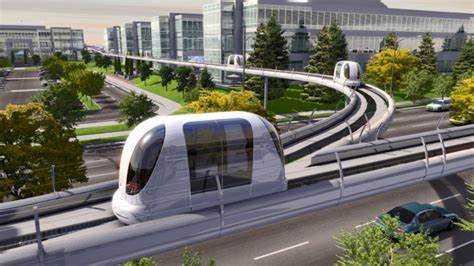
Revolutionizing Public Transportation: Eco Vehicles in Urban Mobility
Introduction
In today’s rapidly developing world, the need for sustainable and environmentally friendly transportation solutions is becoming increasingly important. The concept of eco vehicles in urban mobility is gaining traction as a viable solution to address these concerns. This article provides an overview of the topic and highlights its relevance in the context of sustainable development and urban planning.
Historical Background
Urban areas have witnessed the evolution of public transportation systems over the years. From horse-drawn carriages to steam-powered trains, cities have constantly strived to improve transportation for their residents. However, with the rise of industrialization and the associated environmental concerns, there have been previous attempts to address these issues in public transportation. The introduction of electric trams and buses can be seen as early efforts to mitigate the environmental impact of transport.
Key Concepts and Definitions
Eco vehicles, in the context of urban mobility, refer to vehicles that are designed to reduce their environmental footprint. They include electric vehicles, hybrid vehicles, and those powered by alternative fuels. Understanding these key terms and concepts is crucial in comprehending the role of eco vehicles in urban mobility and their potential impact on sustainability.
Advantages of Eco Vehicles in Public Transportation
One of the main discussion points surrounding eco vehicles in public transportation is their numerous advantages. Firstly, these vehicles contribute to reduced emissions and environmental impact. By utilizing alternative fuels or electricity, eco vehicles help curb air pollution and mitigate the effects of climate change. Additionally, they improve air quality, resulting in substantial public health benefits. Cleaner air translates to reduced respiratory problems and better overall well-being for individuals living and working in urban areas. Furthermore, eco vehicles are known for their energy efficiency, which leads to cost savings for both operators and passengers.
Challenges and Considerations in Implementing Eco Vehicles in Urban Mobility
While the advantages of eco vehicles are evident, there are several challenges and considerations that need to be addressed for successful implementation in urban mobility. Infrastructure requirements, such as charging stations for electric vehicles or fueling stations for alternative fuels, need to be developed and integrated into the existing transportation network. This poses a significant investment and planning challenge for cities. Additionally, the cost considerations and financial viability of eco vehicles must be taken into account. Higher upfront costs and maintenance expenses may deter some transportation agencies from adopting these vehicles. Lastly, the acceptance and adoption of eco vehicles by the public and transportation agencies are crucial for their successful integration into the existing systems.
Integration of Eco Vehicles into Existing Public Transportation Systems
To ensure the seamless integration of eco vehicles into existing public transportation systems, retrofitting existing fleets with eco vehicles is one option. This involves transitioning older vehicles to more sustainable options. Another approach is to plan and design new public transportation systems with eco vehicles in mind. By incorporating eco-friendly infrastructure and vehicle requirements from the outset, cities can optimize the benefits of these vehicles. Collaboration between different stakeholders, including transportation agencies, manufacturers, and policymakers, is essential to drive this integration.
Case Studies or Examples
Cities around the world have successfully implemented eco vehicles in their public transportation systems. For example, some cities have incorporated electric buses into their fleets, resulting in reduced emissions and improved air quality. These case studies provide valuable insights into the challenges faced, solutions implemented, and the overall impact of eco vehicles in different urban contexts. Lessons learned from these examples can be applied to other cities seeking to adopt eco vehicles in their own transportation systems.
Current Trends or Developments
Advancements in eco vehicle technologies are continuously being made, leading to more efficient and sustainable options. Research findings on the impact and effectiveness of eco vehicles in urban mobility are also emerging. These trends and developments highlight the ongoing efforts to improve and optimize eco vehicle solutions for urban transportation.
Challenges or Controversies
The environmental benefits of eco vehicles compared to other modes of transportation have been subject to debate. Some argue that the overall carbon footprint of eco vehicles, including their production and disposal, may not be significantly different from conventional vehicles. Additionally, concerns regarding the sustainability and ethical implications of eco vehicle production and disposal need to be addressed to ensure a truly sustainable transportation solution.
Future Outlook
Looking ahead, there is potential for further developments in eco vehicle technologies, which will continue to revolutionize urban mobility. Government initiatives and policy implications play a crucial role in promoting the adoption of eco vehicles. The projected impact of eco vehicles on urban mobility and sustainability is promising, as more cities recognize the importance of transitioning to eco-friendly transportation solutions.
Conclusion
Eco vehicles have the potential to revolutionize public transportation and promote sustainable urban mobility. Through reduced emissions, improved air quality, and energy efficiency, these vehicles offer significant benefits for cities and their residents. The integration of eco vehicles into existing transportation systems, collaboration between stakeholders, and policy support are key to realizing these benefits. By embracing eco vehicles, cities can create a more sustainable and environmentally friendly future for urban mobility.